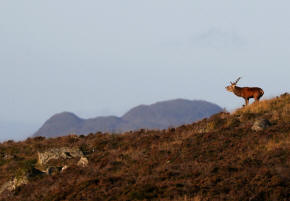Climate change puts Lyme disease in
focus for France's Valneva after COVID blow
 Send a link to a friend
Send a link to a friend
 [August 08, 2022]
By Natalie Grover [August 08, 2022]
By Natalie Grover
LONDON (Reuters) - With climate change
spurring more cases of tick-borne Lyme disease, drugmaker Valneva is
betting big on a vaccine as it looks beyond disappointing sales of its
COVID shot.
Although Valneva secured European Union and British regulatory approval,
both walked away from contracts worth more than a billion dollars
combined, wiping nearly 40% off the value of Valneva's share price in
the past six months.
The French firm had touted its COVID-19 vaccine as a traditional
alternative for people who had refused shots based on newer messeneger
RNA (mRNA) technology, which teach cells how to make a protein that will
trigger an immune response.
But unlike the fierce competition with major international drugmakers
such as Pfizer, Moderna and AstraZeneca to roll out vaccines to tackle
the coronavirus pandemic, there are no established rivals for either
Lyme disease or Chikungunya.

As climate change leads to longer summers and milder winters in many
parts of the world, including Europe and North America, infections which
spread through so-called vectors, such as ticks and mosquitoes, are
escalating https://www.ecdc.europa.eu/en/climate-change/climate-change-europe/vector-borne-diseases,
according to the European Centre for Disease Prevention and Control.
Valneva Chief Executive Thomas Lingelbach said there has been a
significant increase in the prevalence of disease-causing vectors.
"Global warming is certainly a key - if not the driving force," he told
Reuters in an interview.
The company, based in Saint-Herblain on the outskirts of Nantes in
south-west France, is preparing to start a late-stage human trial for
its experimental vaccine against Lyme disease and will soon submit its
vaccine against Chikungunya for U.S. approval after a successful
late-stage study.
The Lyme disease vaccine trial will start in the coming weeks, involving
at least 5,000 people over the age of five.
Lyme disease is usually caused by poppyseed-sized ticks which carry the
bacteria. While most bites do not lead to an infection and not every
person infected has a characteristic rash, some find out later they have
the disease.
But by this point, standard antibiotic treatment can become ineffective
and if untreated, some patients can go on to develop serious
complications, including brain inflammation.
Chikungunya is spread through the bite of an infected mosquito, largely
in the developing world including Africa, Asia and the Indian
subcontinent.
While rarely fatal, the viral disease is characterised by intense muscle
and joint pain that can last months or years.
If approved, Valneva aims to sell its Chikungunya shot as a travel
vaccine in the developed world, and to populations in low- and
middle-income countries. Rx Securities analyst Samir Devani expects it
to generate peak sales of $250 million.
Valenva expects that, if successful, the Lyme disease vaccine, known as
VLA15, will generate annual global sales of $1 billion, given burgeoning
tick populations, rising infection rates and the incidence of long-term
complications.
[to top of second column]
|

A red deer stag bellows on Moulin Moor above Pitlochry, Scotland,
Britain October 15, 2021. REUTERS/Russell Cheyne/File Photo
 That could prove transformative for
Valneva, which generated 350 million euros in revenue last year.
'HUGE OPPORTUNITY'
The COVID-19 pandemic and recent outbreaks of monkeypox outside
Africa, where it is endemic, have shored up interest in vaccines for
infectious diseases among drugmakers and investors.
Endemic diseases which are either chronic or prone
to acute periodic outbreaks are a major public health challenge for
the developing world and a "huge opportunity" for vaccine makers,
David Pinniger, healthcare fund manager at Polar Capital, said.
This is reflected in the fund's portfolio, which includes shares in
Valneva, AstraZeneca and Bavarian Nordic, which makes the main
approved monkeypox vaccine.
In June, Valneva was given a major boost when Pfizer bought an 8.1%
stake for 90.5 million euros ($92 million), to co-develop the Lyme
disease vaccine.
Valneva's VLA15 is not the first Lyme disease vaccine to be
developed. SmithKline Beecham, which later became GSK, secured U.S.
approval for its LYMErix shot in 1998.
But challenges including a lukewarm recommendation from a key U.S.
advisory committee, unfounded safety concerns and growing
anti-vaccine sentiment, led to paltry sales.
The vaccine generated just $5 million in 2001 and it was withdrawn
from the market a year later.
Valneva and Pfizer are banking on how much things have since
changed, with infection rates now at half a million cases in Europe
and the United States each year.
The hope is that VLA15 could help people who live in rural areas and
other places where ticks are endemic, Lingelbach said.

VLA15 is designed to attack multiple strains of bacteria, rather
than just one as was the case with LYMErix.
There is also a greater scientific understanding of Lyme disease,
while celebrities including Justin Bieber and Amy Schumer have made
their struggles with it public.
"Their word carries some weight," Sam Telford, a professor at Tufts
University who helped run the LYMErix clinical trial, said.
($1 = 0.9825 euros)
(Reporting by Natalie Grover in London; Editing by Josephine Mason
and Alexander Smith)
[© 2022 Thomson Reuters. All rights
reserved.] This material may not be published,
broadcast, rewritten or redistributed.
Thompson Reuters is solely responsible for this content. |